
Ecological monitoring
Canada's national parks provide a home for many plants and animals - from lilies to majestic forests, and from insects to grizzly bears. An important challenge for parks Canada is to know what plants and animals occur in a given park, what ecosystems they use, and how these species and ecosystems are changing over time.
Park inventories tell us what kind of plants and animals we have, and for some species, about how many we have. In the same way that animals and plants can be classified into species, park ecosystems can be classified into ecosystem types. For example, wetlands, forests, grasslands, and arctic tundra are examples of park ecosystem types that we can identify and inventory by mapping.
In addition to knowing how many kinds of plants, animals, and ecosystems we have, we also need to know how the number or health of park species or ecosystems are changing over time - this is the job of monitoring.
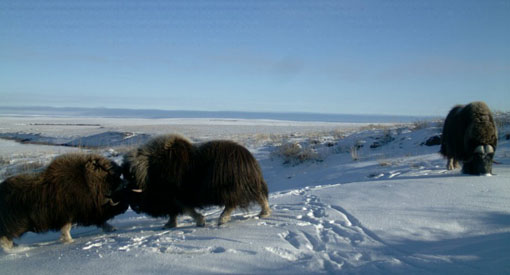
Our cameras capture the wild lives of wildlife.
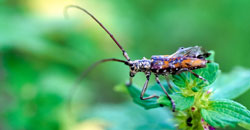
Using a genetic identification method called "Barcode of Life," researchers complete a major survey of insect diversity.
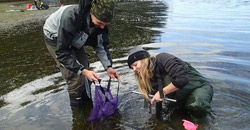
Knowing how many kinds of plants, animals, and ecosystems we have... and checking on their status.
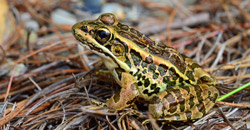
Find out how national parks are managed to keep them healthy and whole.
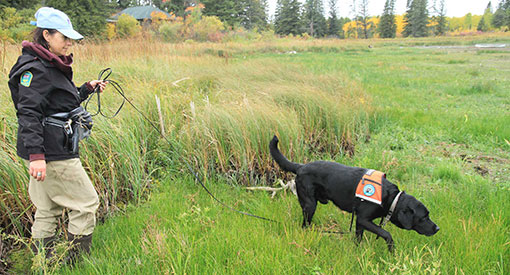
At Riding Mountain National Park, the dog squad sniffs out invasive species.
Field work at Parks Canada
Transcript
[Parks Canada beaver logo]
[title: parkscanada.gc.ca]
[inside helicopter cockpit circling over arctic tundra, taking GPS readings]
[text on screen: Field Work]
[from inside helicopter view of ethereal arctic mountaintop shrouded in mist]
[text on screen: Ivvavik]
[scientists hiking in field, collecting plant samples]
[text on screen ecotype mapping]
[aerial view of semi frozen lake landscape with moody dramatic cloudy skies]
[text on screen: Wapusk]
[team of scientists at lake’s edge collecting water samples]
[text on screen: freshwater monitoring]
[idyllic valley at Lake Hazen, Quonset huts against crisp blue skies, twin otter plane flying with giant mountain backdrop, hikers crest mountaintop]
[text on screen: Quittinirpaaq]
[beautiful mountain and valley setting, scientists hike along river bed passing giant boulders ]
[text on screen: Torngat Mountains]
researchers lay out grid map on ground surface, scientists in camp consult maps
[text on screen: vegetation monitoring]
[helocopter in Ivitak watershed, scientists drill in permafrost, view from helicopter as it ascends leaving researchers on ground below]
[text on screen: permafrost monitoring]
[title: to learn more about careers with Parks Canada, visit www.pc.gc.ca]
[title: Created for Parks Canada by HyperfocalFilms www.hyperfocalfilms.com]
[title: Parks Canada/Parcs Canada government logo]
[title: Copyright - Her Majesty the Queen in Right of Canada, represented by Parks Canada, 2010]
title: Government of Canada logo]
[end]
- Date modified :